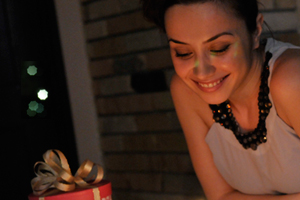Text begins from here.

 |
The blurring that occurs both in front of and behind a subject serves to isolate it and gives the image a delicate, floating feeling, without detracting from the overall expression. While focal length and aperture both influence the amount of soft-focus produced, it is ultimately the lens' remaining aberration and aperture blades that create an attractive or unpleasant soft-focus. Beautiful soft-focus is said to be generally smooth, not irritating, without lines and other distractions. |
A beautiful soft-focus is generally said to start from the in-focus area of a subject and gently transform into an evenly blurred background, giving a feeling of distance that is not distracting and lends the image a soft nuance. |
||||||
|
When soft-focusing causes lines to become doubled, it is called a "double line" effect and is the most common form of an unattractive soft-focus. If a fixed light source is used, light reflecting off background surfaces can become multi-sided like the shape of the aperture blades, which can be unattractive, depending on the shape of the lens' aperture. |
||||||
|
Aperture blades change the soft-focus look. |
 |
The shape and number of aperture blades has a large effect on the soft-focus produced. A large number of aperture blades creates a circular aperture that produces a beautifully rounded, delicate soft-focus. |




